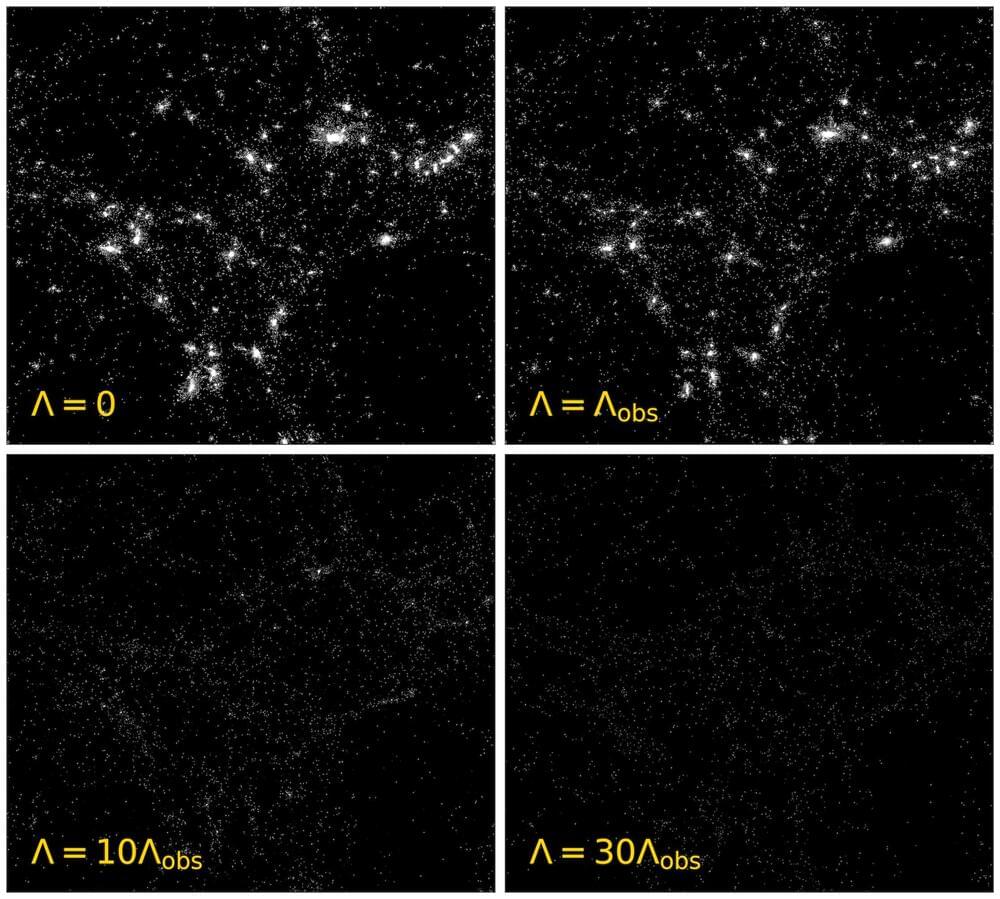The approach presented in the paper involves calculating the fraction of ordinary matter converted into stars over the entire history of the universe, for different dark energy densities.
The model predicts this fraction would be approximately 27% in a universe that is most efficient at forming stars, compared to 23% in our own universe.
This means we don’t live in the hypothetical universe with the highest odds of forming intelligent life forms. Or in other words, the value of dark energy density we observe in our universe is not the one that would maximize the chances of life, according to the model.
